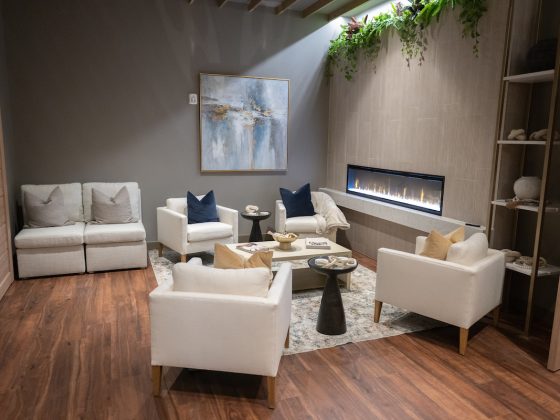Frankie Fuertes’ business model can be described as a self-fulfilling prophecy—a repeated pattern marked by the question of “can I do it?” and the action that becomes its necessitated answer.
“That’s how I do things,” says Fuertes, a self-made artist and business owner, “I ask myself, ‘can I do it?’ and then I just do it.” Fuertes’ skillful ambition and passion for quality cuts was quickly met with a substantial following, his loyal clientele developing into a close-cut community. A business that got its start by way of trust and relationships–borrowing tools and untrimmed hair from the neighbors–and continues to be distinguished by those very factors, Fuertes maintains that cosmetology shouldn’t designate superficiality, rather an assurance of beauty at the deepest of levels. Here, we sit down with Frankie to hear about his hairstyling success, his growing brand, and to learn just how he does it.

How did you get your start in hair styling?
I’m from Costa Rica, but I moved [to the US] when I was 16. I got started by cutting the neighbors’ hair; I would borrow clippers from them and do haircuts for the kids in exchange. After I graduated high school, I went to a bunch of different beauty schools–I would start, I would drop out, I would start somewhere else–I just didn’t have time and I already had clients. But, I finally got my cosmetology license, then worked in a couple salons across North Carolina, and later worked for a food manufacturer in Lincolnton for four years or so, but I was always doing hair after hours. I moved to Charlotte in 2015 and bought a condo Uptown where I now have my studio. It’s a little suite, two meters by four meters, but it’s where everything goes on.

How did you build your clientele?
Word of mouth. [To be scheduled with me], you have to have been referred by someone; John Doe doesn’t just book a haircut. It’s my attempt at a speakeasy kind of thing. If someone I don’t know books me online, I do the whole Facebook-Instagram search to check out who they are because, you know, they’re coming to my house and it’s very personal. Typically, people I know will refer like-minded people they know, so it all becomes a community.
How did you transition into making your own products?
I wasn’t happy with the products I had been using, so I decided to just make one myself. [The styling clay] took me about a year to develop; it has about 10 ingredients, all of which come from the earth. And it was just trial and error. I invested a lot of money and time in it and released it last November. I also have a shampoo and conditioner, and a couple more products in the works.

Tell me about your connection with Tabor.
[My relationship with] Tabor is a perfect example of wanting something and asking for it. I’ve shopped at Tabor for years, and I had always pictured my products in their store. I pretty much bought my products in one day, and they eventually offered to carry them. I now sell exclusively online and at Tabor. We’re looking forward to doing haircuts at Tabor once or twice a month on Saturdays, just to collaborate with each other and to bring some of our clients together.
My goal is that, by the time they get up from that chair, [the client] feels like the most beautiful person; that they feel seen and heard; that’s my goal.
What is the driving mission behind your business?
If you go just anywhere to get your hairc
ut, they’ll want to get you in and out. I keep it limited; I only do 6 or 8 haircuts a day, and everyone gets an hour. My idea is to, in that hour, build a relationship. It’s a time for the client to chill, to talk, to appreciate that time– for a lot of people, it’s the only hour they get to really relax. It’s therapeutic. My goal is that, by the time they get up from that chair, [the client] feels like the most beautiful person; that they feel seen and heard; that’s my goal.












